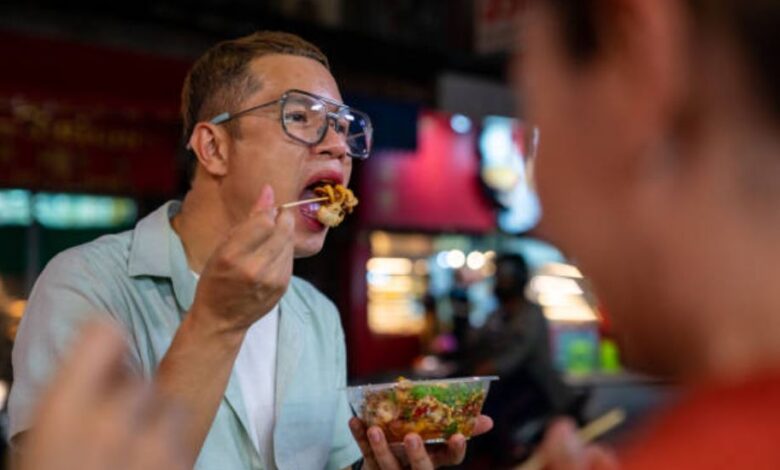Chinatown Hawker Leftovers Consumption: Social Insight & Sustainability

Chinatown hawker centres have long been a cultural staple in Singapore, offering affordable and diverse street food options. These open-air food complexes serve as social melting pots, where locals and tourists alike gather over shared tables, indulging in iconic dishes from chicken rice to char kway teow.
But beneath the surface of this culinary vibrance lies a lesser-discussed phenomenon — Chinatown hawker leftovers consumption. Increasingly observed among elderly patrons and low-income individuals, this practice involves consuming unfinished food left behind by others. Whether driven by necessity, a desire to reduce food waste, or cultural beliefs, this act has sparked debates about dignity, public health, and environmental sustainability.
In this article, we explore the roots, realities, and ramifications of this growing trend, shedding light on the socio-economic complexities behind hawker leftovers consumption in Chinatown.
The Practice: What’s Happening in Chinatown?
In Singapore’s Chinatown, particularly at the People’s Park Food Centre, elderly individuals have been seen scouting food court tables for uneaten meals. Viral Reddit threads and local news reports have shared images and stories of men and women quietly approaching tables, inspecting for leftover rice, meats, and vegetables — and sometimes finishing what was left behind.
The motivations are varied:
- Some participants claim they do it to avoid food waste, not because they are hungry or cannot afford food.
- Others suggest that the habit formed over time due to financial constraints or homelessness.
- Still, a few view it as a personal choice, rooted in frugality or upbringing, especially among those from older generations where waste was frowned upon.
This raises an important question: Is this practice a symptom of societal neglect, a sustainable solution to food waste, or a blend of both?
Why Do People Consume Leftovers at Hawker Centres?
1. Poverty and Food Insecurity
For some elderly Singaporeans, CPF (Central Provident Fund) savings and social assistance may be insufficient to cover all their needs. While Singapore is a wealthy nation, income inequality remains a concern. Not everyone benefits equally from economic growth.
Those without family support or who suffer from medical conditions that limit their earning potential may find themselves stretching every dollar. Hawker centre leftovers become a last-resort food source, albeit one fraught with risk and social stigma.
2. Cultural Attitudes Towards Food Waste
In traditional Asian households, wasting food is taboo. Phrases like “don’t waste rice” are deeply ingrained in many Singaporeans’ upbringing. This cultural sentiment extends to public eating habits, where some elderly diners feel uncomfortable seeing untouched food being discarded.
For these individuals, the act of consuming leftovers becomes a moral choice rather than one based on need. It is a way to honor the food, the farmer who produced it, and the cook who prepared it.
3. Environmental Sustainability
Singapore faces growing challenges with food waste. According to the National Environment Agency (NEA), food waste in 2022 totaled over 800,000 tonnes, with hawker centres contributing a sizable portion. Over-ordering, large portion sizes, and last-minute cancellations often result in uneaten meals being thrown away.
From this perspective, leftover consumption can be seen as an informal food recovery system, similar to food banks but more ad-hoc and unsanctioned. While not ideal, it does contribute to reducing the carbon footprint of food waste.
Public Reaction: Mixed Feelings
✅ Supporters Say:
- “Better than letting good food go to waste.”
- “If they’re not hurting anyone, why stop them?”
- “It’s a personal choice. We shouldn’t judge.”
❌ Critics Argue:
- “It’s unhygienic and could spread diseases.”
- “It makes Singapore look like it doesn’t care for its elderly.”
- “This is a sign of social failure — not sustainability.”
The act of eating from other people’s plates raises health concerns, particularly post-COVID. Uneaten food left out in the open may harbor bacteria, and consuming it can lead to food poisoning or worse.
There’s also the emotional impact — watching elderly citizens scavenge for leftovers can be distressing and raise questions about social welfare programs and communal responsibility.
Hawker Centre Operators and Government Response
Currently, there are no laws prohibiting individuals from eating leftovers at public food courts. However, operators and cleaners are often trained to clear tables swiftly to minimize such occurrences.
Government responses have been more subtle. Agencies like NEA and the Ministry of Social and Family Development have emphasized community outreach programs and encouraged hawkers to donate unsold food through initiatives like:
- Food Rescue @ Events
- SG Food Rescue
- The Food Bank Singapore
These programs aim to divert excess food to low-income families and eldercare homes, offering a more organized and hygienic approach to reducing food waste while helping the needy.
Can It Be Done Safely?
If individuals are going to engage in leftover consumption regardless of policy or public opinion, what are the best practices?
✅ Safety Tips:
- Check Time: Only eat food left for a short period.
- Avoid High-Risk Dishes: Steer clear of raw foods like sashimi or half-eaten meals.
- Observe Cleanliness: Look for food untouched and properly placed.
- Choose Packaged Leftovers: Some patrons leave entire takeaway boxes unopened — these are safer.
- Sanitize Hands: Prevent the spread of germs before and after eating.
Still, health experts strongly advise against casual leftover consumption due to unpredictable food safety conditions.
A Better Solution: Community-Based Redistribution
Rather than individuals picking through leftovers, Singapore can build on its current progress in organized food redistribution.
This includes:
- Encouraging hawkers to offer discounted meals at closing hours.
- Setting up “pay what you can” food stalls.
- Creating “community fridges” in hawker centres where unused food can be stored for public access.
- Mobilizing volunteers to collect, sort, and distribute edible but unsold food.
The long-term goal should be systemic reduction of food waste paired with dignified aid for vulnerable populations.
International Comparison: A Global Perspective
In countries like South Korea, food waste is tightly regulated, and food banks play a major role in redistribution. Meanwhile, in the U.S., “food rescue” movements are growing, and apps like Too Good To Go allow customers to purchase restaurant leftovers at a fraction of the price.
Singapore has the infrastructure and innovation potential to lead Asia in such solutions — and Chinatown’s case can serve as a model or a warning, depending on how the issue is addressed moving forward.
Conclusion
Chinatown hawker leftovers consumption is not merely an isolated behavior but a reflection of deeper social, economic, and cultural dynamics. From elderly individuals who aim to minimize waste, to struggling citizens seeking affordable meals, this practice highlights the complex interplay between sustainability and survival.
Rather than dismiss or shame those who partake, Singaporean society must ask: how can we create a food ecosystem that values dignity, safety, and sustainability equally?
It’s time for open dialogue, improved support systems, and practical innovation to transform this issue from a problem into a potential solution.
This article is published by Digi Blog.





